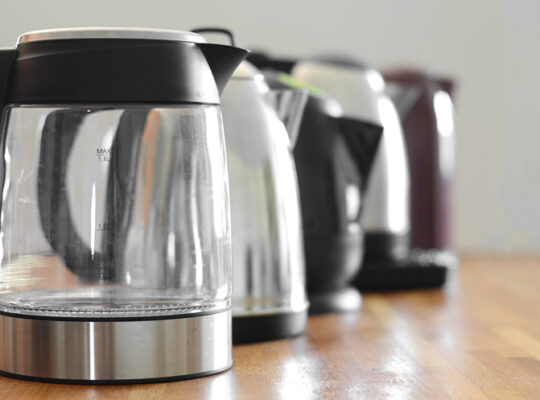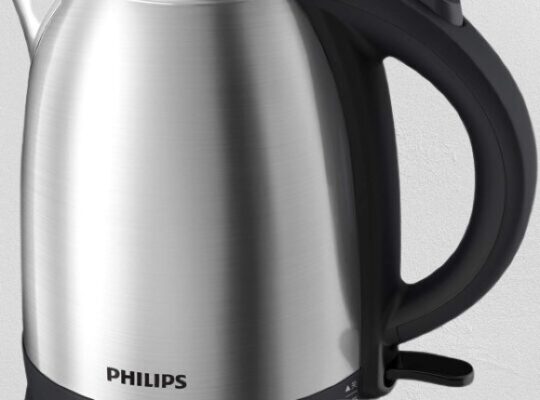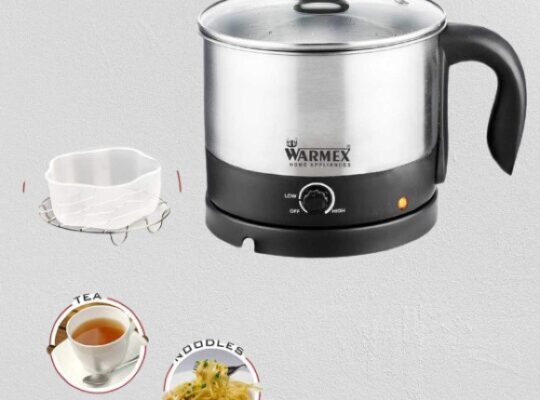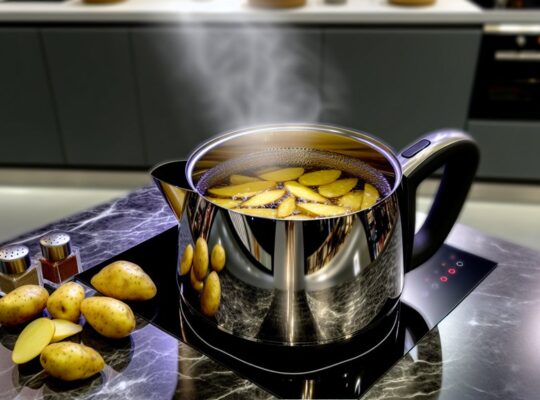To clean your electric kettle, first unplug it and let it cool. Mix equal parts of water and white vinegar, filling the kettle halfway. Let it sit for 30 minutes, then boil the mixture to tackle stubborn mineral buildup. Rinse thoroughly with fresh water, and wipe the exterior with a damp cloth. Regular descaling every 1-3 months keeps your kettle in great shape. Discover additional maintenance tips to prolong your kettle’s lifespan.
Key Takeaways
- Unplug the kettle and let it cool before starting the cleaning process.
- Mix equal parts of water and white vinegar or citric acid for an effective cleaning solution.
- Fill the kettle halfway with the mixture, let it sit for 30 minutes, then boil it to eliminate limescale.
- Rinse the kettle thoroughly with fresh water and wipe the exterior with a damp cloth.
- Regularly descale every 1-3 months to maintain kettle efficiency and prevent mineral buildup.
Understanding Mineral Buildup
When you boil water in your electric kettle, it can lead to mineral buildup over time, especially if you live in an area with hard water. These mineral deposits, primarily calcium and magnesium, accumulate inside the kettle, affecting its efficiency and lifespan. Regular kettle maintenance is essential to prevent these issues. If you notice a white, chalky residue, it’s a clear sign of mineral buildup. This not only impacts the taste of your beverages but can also lead to longer boiling times. To keep your kettle functioning efficiently, consider descaling it every few weeks. Using a mix of vinegar and water or a commercial descaler can effectively eliminate mineral deposits, ensuring your kettle remains in great condition for daily use. Regular maintenance is important to prevent limescale buildup, which can contaminate your beverages.
Essential Cleaning Supplies
To effectively tackle mineral buildup in your electric kettle, having the right cleaning supplies on hand is key. Start with a good cleaning solution—white vinegar or citric acid works wonders for dissolving limescale. If you prefer a store-bought option, look for descaling products specifically designed for kettles. Next, gather essential cleaning tools like a soft sponge or cloth to avoid scratching the kettle’s surface. A small brush can help reach hard-to-clean areas, especially around the spout. You might also want a measuring cup for precise mixing of your cleaning solution. With these supplies, you’ll be well-prepared to restore your kettle’s efficiency and keep it looking new. Additionally, regular maintenance is crucial for optimal performance to prevent mineral buildup from recurring.
Step-by-Step Cleaning Process
Cleaning your electric kettle is a straightforward process that can greatly enhance its performance and longevity. Start by unplugging the kettle and letting it cool down. For most kettle materials, a simple mixture of equal parts water and vinegar works well as a cleaning method. Fill the kettle halfway with this solution and let it sit for about 30 minutes. Afterward, boil the mixture to help remove any stubborn limescale. Once done, pour out the solution and rinse the kettle thoroughly with fresh water. If your kettle has a stainless steel interior, avoid using abrasive cleaners to prevent scratches. Finally, wipe the exterior with a damp cloth to keep it looking sleek. Your kettle will be clean and ready for use!
Preventative Maintenance Tips
After confirming your electric kettle is clean, maintaining its performance is key to a longer lifespan. Here are some preventative maintenance tips to keep your kettle in top shape:
| Maintenance Task | Frequency | Benefits |
|---|---|---|
| Regular Descaling | Every 1-3 months | Prevents limescale buildup |
| Proper Storage | When not in use | Protects from dust/debris |
| Inspect Cord & Plug | Monthly | Confirms safety and function |
Additionally, ensuring precise temperature control can enhance the efficiency and longevity of your electric kettle.
Troubleshooting Common Issues
Have you ever wondered what to do when your electric kettle isn’t functioning properly? First, check for any mineral buildup; this can affect kettle performance. If you see limescale, try descaling with a mixture of vinegar and water, and remember to maintain a regular cleaning frequency to prevent future issues. If your kettle doesn’t turn on, make certain it’s properly plugged in and the power outlet works. For kettles with automatic shut-off, inspect the lid—if it’s not closed correctly, it might not heat. Finally, if you notice strange noises while boiling, it could indicate a problem with the heating element. Regular maintenance and addressing these common issues will help keep your kettle in top shape. Additionally, you can use your kettle for boiling eggs as a reminder of its versatility and the importance of keeping it clean for optimal performance.
Frequently Asked Questions
Can I Use Vinegar to Clean My Electric Kettle?
Yes, you can use vinegar to clean your electric kettle. Its acidity helps dissolve mineral buildup, enhancing cleaning effectiveness. Plus, vinegar’s benefits include being natural and cost-effective, making it a practical choice for maintenance.
How Often Should I Clean My Electric Kettle?
You should clean your electric kettle every few weeks for peak performance. Regular kettle maintenance tips suggest checking for mineral buildup and cleaning frequency can depend on your water hardness. Keep it fresh for better taste!
Is It Safe to Use Baking Soda in My Kettle?
Yes, it’s safe to use baking soda in your kettle. It’s effective for removing stains and odors. However, consider other cleaning alternatives like vinegar for a natural approach if you prefer variety in your cleaning methods.
Can I Put My Kettle in the Dishwasher?
You can’t put your kettle in the dishwasher. Most kettle materials, like plastic and metal, aren’t dishwasher safe. Hand washing is best to prevent damage and maintain its functionality and appearance for longer use.
What Should I Do if My Kettle Smells?
If your kettle has an odor, try filling it with equal parts water and vinegar, then boil. Let it sit for an hour before rinsing thoroughly. This helps in removing smells and freshening your kettle.
Conclusion
Cleaning your electric kettle is essential for maintaining its efficiency and flavor. By understanding mineral buildup and using the right supplies, you can easily keep it in top shape. Follow the step-by-step process, and don’t forget to apply preventative maintenance tips to avoid future issues. If you encounter common problems, refer back to the troubleshooting section to resolve them quickly. Regular care will guarantee your kettle brews delicious drinks for years to come.



